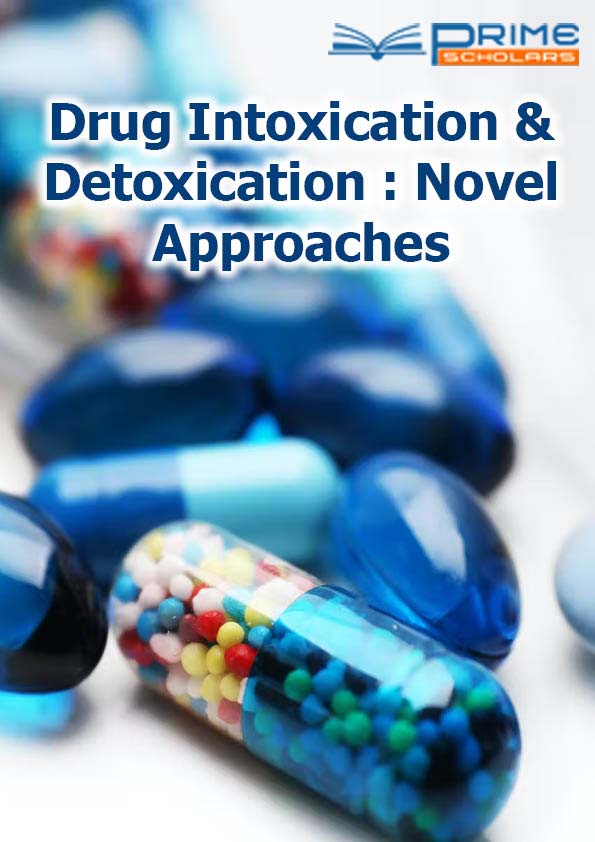Perspective - (2025) Volume 6, Issue 1
Unveiling Antidotes: A Vital Shield Against Poisonous Shadows
Elena Rodriguez*
Department of Narcotics, McGill University, Canada
*Correspondence:
Elena Rodriguez, Department of Narcotics, McGill University,
Montrea,
Canada,
Email:
Received: 13-Dec-2023, Manuscript No. DIDNA-24-18584;
Editor assigned: 16-Dec-2023, Pre QC No. DIDNA-24-18584 (PQ);
Reviewed: 02-Jan-2024, QC No. DIDNA-24-18584;
Revised: 05-Feb-2025, Manuscript No. DIDNA-24-18584 (R);
Published:
13-Feb-2025, DOI: 10.36648/DIDNA.6.1.42
Introduction
In the intricate dance between humanity and the ever evolving landscape of threats, the concept of an antidote stands as a beacon of hope and resilience. From venomous bites to accidental poisonings, antidotes play a crucial role in mitigating the potentially fatal consequences of exposure to harmful substances. In this commentary, we delve into the significance of antidotes, exploring their historical context, the diverse range of poisons they counteract, and the ongoing advancements shaping this critical aspect of medical science. The history of antidotes is woven into the fabric of medical knowledge, reflecting humanity's ceaseless quest to conquer the invisible threats lurking in our environment. Ancient civilizations, such as the Greeks and Egyptians, recognized the potential dangers of toxic substances and began experimenting with various remedies.
Description
Some of the earliest recorded antidotes include herbal concoctions and primitive antidote principles, showcasing an early understanding of the need for counteractive measures against poisons. Antidotes encompass a diverse array of substances specifically designed to neutralize the effects of toxins. From snake venom to heavy metals, each antidote is tailored to counteract a particular poison. Take, for instance, antivenom-a lifesaving antidote used to treat snakebite envenomation. Derived from the antibodies of animals immune to snake venom, antivenom has revolutionized the treatment of snakebite victims, illustrating the ingenious nature of antidotal science. Beyond the realm of animal venoms, the antidotal arsenal extends to include substances like activated charcoal, a versatile antidote capable of adsorbing a wide range of toxins in the gastrointestinal tract. Naloxone, another critical antidote, has become a frontline defence against opioid overdoses, swiftly reversing the potentially fatal respiratory depression induced by opioids. As science and medicine continue to advance, so too does the sophistication of antidotal science. The development of specific antidotes for targeted toxins has become more refined, with researchers harnessing cutting edge technologies to design antidotes with enhanced efficacy and fewer side effects. Nanotechnology, for example, has opened new avenues for the targeted delivery of antidotes to affected tissues, minimizing collateral damage to healthy cells. Furthermore, genetic engineering has played a pivotal role in the creation of recombinant antidotes, offering a more sustainable and scalable approach to antidotal production. These advancements underscore the dynamic nature of antidotal science, positioning it at the forefront of medical innovation. Antidotes are not merely confined to the realm of emergency medicine; they also play a vital role in public health initiatives. Vaccines, which essentially act as preventative antidotes, exemplify this proactive approach. By exposing the immune system to harmless components of a pathogen, vaccines train the body to mount a rapid and effective defence, preventing the onset of diseases that might otherwise require reactive measures. In the context of chemical exposures, the stockpiling of antidotes for potential mass poisonings or acts of bioterrorism becomes a strategic imperative. Governments and health organizations worldwide invest in research and development to ensure that antidotal responses are not only effective but also scalable to address large scale emergencies.
Conclusion
Antidotes represent a triumph of human ingenuity over the lurking shadows of toxicity. From ancient herbal remedies to modern biotechnological marvels, the evolution of antidotes mirrors our relentless pursuit of solutions to mitigate the impact of harmful substances. As antidotal science continues to advance, it stands as a testament to our collective commitment to safeguarding lives against the unseen perils that surround us. Whether in the form of snakebite antivenom, opioid reversing agents, or innovative nanotechnological interventions, antidotes remain a vital shield in our ongoing battle against the potentially lethal forces that threaten human health and well-being.
Citation: Rodriguez E (2025) Unveiling Antidotes: A Vital Shield against Poisonous Shadows. Drug Intox Detox: Novel Approaches.
6:42.
Copyright: © 2025 Rodriguez E. This is an open-access article distributed under the terms of the Creative Commons
Attribution License, which permits unrestricted use, distribution, and reproduction in any medium, provided the original author
and source are credited.
